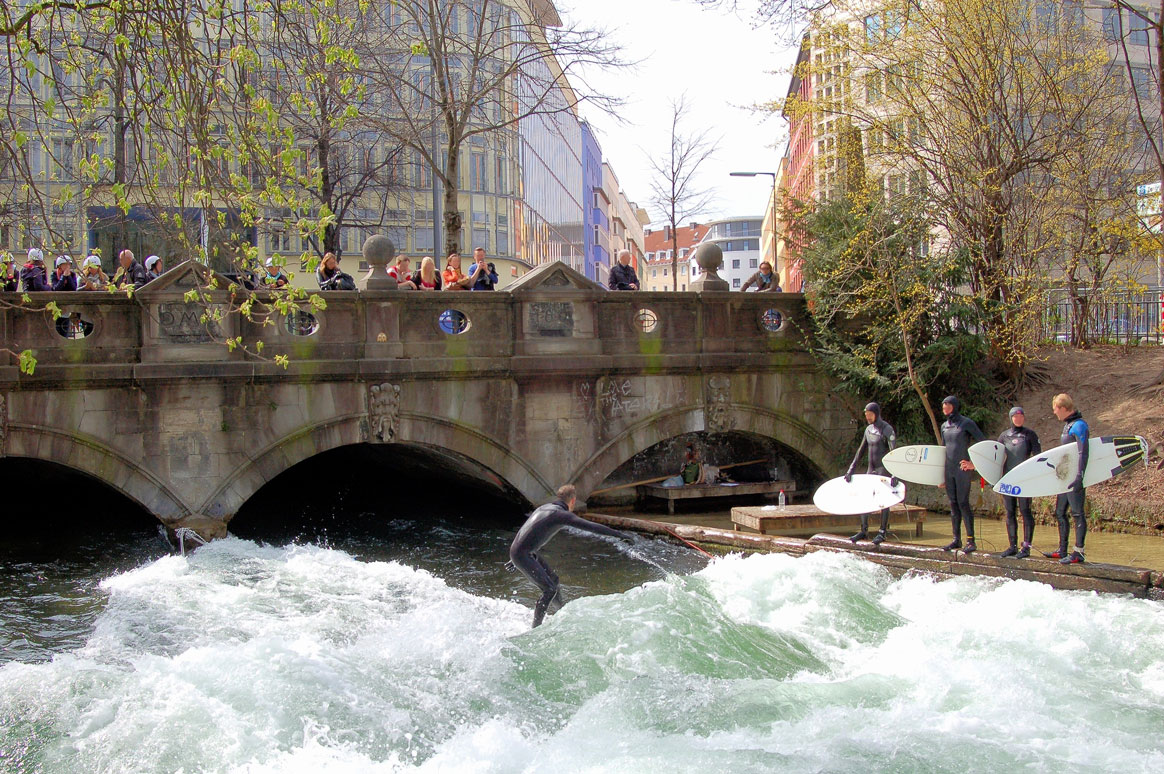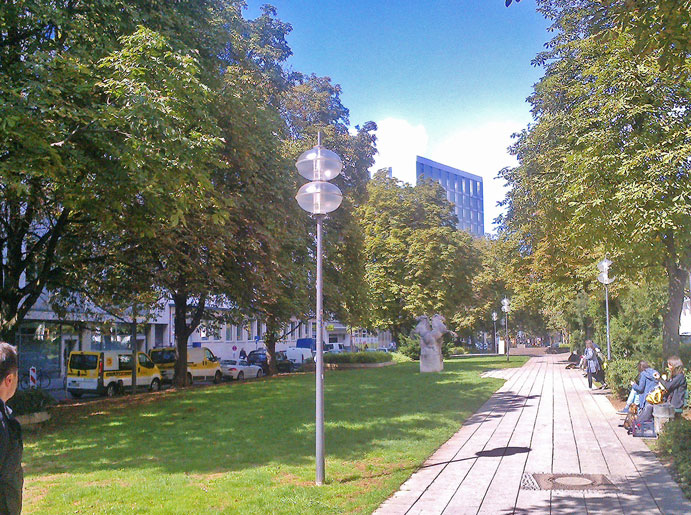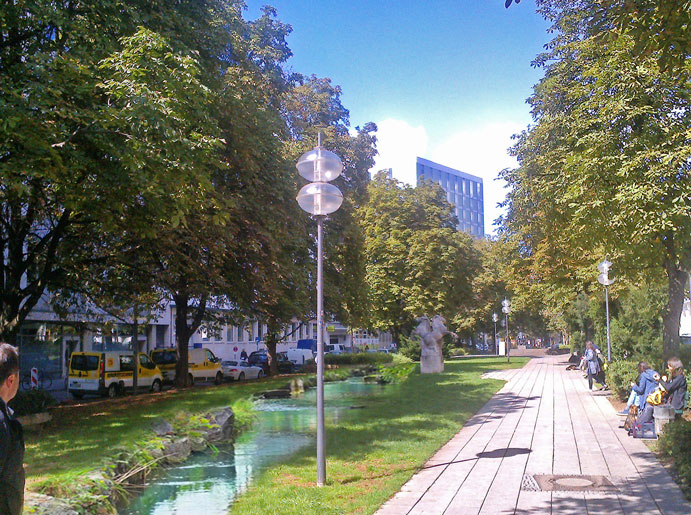SUSTAINABILITY
Munich Above, Venice Below
July 23, 2020
By Franziska Consolati
Green City e.V.

Urban surfing on the Eisbach in Munich's Englischer Garten attracts river surfers from across the world
IMAGE: Gabler Werbung
ADVERTISEMENT
Sometimes you just have to be very quiet in Munich - if you listen carefully, you can hear gurgling and rippling sounds in various places in the city centre. Sometimes it gets louder, but sometimes the soft tones seep away completely beneath your feet. Yet water is nowhere in sight.
So where do the sounds come from?
What many people don’t know is that a network of streams extends below Munich for 175 kilometres - approximately the distance between London, Great Britain and Calais in France.
In the 19th century, this stream network made a decisive contribution to the quality of life and business in Munich. The old town was riddled with babbling brooks. The old Munich city wall was bordered by streams on both sides, serving mills, tanneries and other industries. Large rafts, vital to Munich's trade, glided through the city. So it’s not surprising that at that time, Munich was nicknamed ‘Little Venice’.
However, over time, the importance of Munich’s city streams gradually decreased—and even became a burden for the rapidly growing state capital. Additional space was needed and more and more apartments were. City streams had to give way to this development and most were filled in or covered, with the majority of those that remained finally filled in when the underground was built in the 1960s.
It was not always in the interest of the citizens, though, and resistance quickly formed. As early as the 1970s, many Munich residents protested, demanding their streams back—and numerous protesters and groups made attempts to tear open concrete covers again.
In 1999 the city council gave in, at least in part: the decision was made to uncover the Auer Mühlbach, which flows north past the Nockherberg, famous for hosting the original beer festival. Since then, the Munich city streams have again entered the public awareness.



Contrast between Herzog-Wilhelm Park as it is today and an artist's rendition of bringing the 19th century stream back to the surface
IMAGE: Ingenieurbüro Patscheider und Partner / Oriana Taddeo
Today, the city streams are an important way to prepare Munich for drought and hotter summers. They not only provide recreation and enhance the inner city of Munich, but also mitigate the heat waves to be expected from climate change due to their cooling effect.
The Munich environmental organisation Green City e.V. has therefore been fighting for years to bring part of the city streams back to the surface. Of course, this is now only possible in a few places. However, a feasibility study shows that even in the middle of the city centre, between Sendlinger Tor and Stachus where parked cars currently take up most of the available space, it is possible to let the West Stadtgrabenbach bubble up again. The stream is currently flowing at a depth of around four metres, but with the help of pumps and turbines, which the brook itself would drive, it could be brought up to the surface. Not only would it be self-sufficient in terms of energy, but it would also actively improve the ambient climate.
In the meantime, Green City e.V. has also been able to convince the Munich City Council of its plans. In September 2019, the city council's construction committee indicated that plans for redesigning the section of the road should be pushed ahead.

The above map shows the course of Munich’s streams and hidden hydrology
It will probably take years before the Stadtbach actually runs through the city centre once again. Until then, the old ‘Little Venice’ atmosphere can be enjoyed in other places in the city: the Auermühlbach, a remnant of the old 175 km long stream network, flows from the Marienklause through the animal park and the Schyrenbad, while the Hachinger Bach flows from Perlach into the urban area and crosses the Ostpark. There’s also the famous Eisbach, which attracts surfers with its waves in both summer and winter, and the Glockenbach, which gave the whole district its name, waiting to welcome Munich’s citizens and visitors.
Find out about other great actions that Green City are taking to make Munich more liveable and future-proof by visiting:
Terms and Conditions | About Sustain Europe | Privacy Policy | GDPR | Advertising | Contact Sustain Europe
© Sustain Europe 2023. All rights reserved. Powered by 100% Green Energy. Our pledge to the Environment.